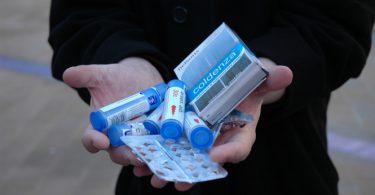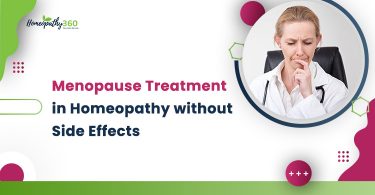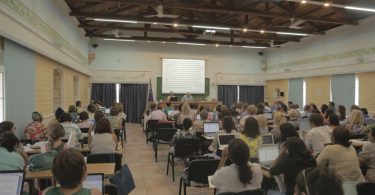| ABSTRACT: Constantine Hering considered Berridge repertory as the clearest and best repertory of his time. Edward William Berridge was mentor of John Henry Clarke and James Compton Burnett. Berridge cured Thomas Skinner of his debilitating ill health by Sulphur 10M, converting and introducing him to Homoeopathy. This article is a critical review of II edition of Berridge’s Repertory · Philosophical Background of Repertory · Its Plan and Construction · Advantages over General repertories · Limitations of Repertory · Working out of the case together with comparison to General Repertories |
INTRODUCTION:
Edward William Berridge (1844-1920) was a British orthodox physician who was converted to Homoeopathy. Hewas trained at St. Bartholomew’s Hospital in 1864, and then travelled to America to study at the Homeopathic College of Pennsylvania, graduating in 1869.Berridge was a founding member of the International Hahnemannian Association. He was ahigh potency Prescriber. Here overview of the repertory together with comparison of worked out cases of this repertory with Kent repertory and BBCR has been presented here.
PHILOSOPHICAL BACKGROUND OF REPERTORY
A perfect repertory should contain a reference to every symptom of the materia medica under every rubric where it can possibly be looked for. Selection of the remedy by means of repertory and materia medica is the only sure and scientific way of prescribing.
Clinical cases are important for determining concomitants as it is often difficult or impossible to decide from the provings alone what symptoms are really connected with each other.
He was in favour of application of doctrine of analogy for selection of remedy as materia medica of his time was incomplete.
According to him hair splitting distinction should be avoided in a repertory (though in the Materia medcia the ipsissima verba of the provers should be given ), as different provers will often describe the same symptoms by different terms.
He proposed plan based entirely on the provings showing relative frequency with which any symptom has been produced, compared with every other symptom of the materia medica. This plan however, cannot be satisfactorily carried out till we have a complete material medica.
In the rubrics “right then left”, “above then below”, and the reverse, clinical symptoms are marked with an asterisk, to facilitate the application of Hering’s law of inverse directions.
Three great rules of the Master Hahnemann, when followed properly helps in achieving maximum amount of benefit from Homoeopathy.
- Careful selection of similimum
- Single remedy
- Minimum dose
The minimum dose as per Berridge is one of highest potencies perfectly Homoeopathic to the case.
PLAN AND CONSTRUCTION OF II EDITION
| No. of editions and Publication | Two;Publication of I Edition in 1869 and II Edition in 1873 |
| Second Edition is mostly used | Revised rearranged and very much enlarged |
| No of Drugs represented | 1171 |
| No of Pages | 317 |
| Gradation | Roman letters and Roman (Bracketed) for Doubtful Symptoms |
| Sources of repertory | C. Hering’s Materia Medica Symptoms from later provings Cases of poisoning reported in allopathic journals |
ARRANGEMENT OF THE BOOKS:
| Preface | List of the medicines |
Synonyms | Chapters divided into 2 sections | Appendix. | Errata | Index | Opinion of press |
In Synonyms he arranged under one rubric all varieties of expressions which he found synonymous in clinical practice. For e.g. Boring is synonymous with digging and rooting. Symptoms verbally the same may actually be different, according to their localities. For e.g. Pressing out in head generally is equivalent to bursting and in forehead it is equivalent to pressing forwards.
A perfect repertory should contain a reference to every symptom of the materia medica under every rubric where it can possibly be looked for. To effect this he has divided each chapter of this repertory in 2 sections
- SECTION I: The symptoms themselves
- SECTION II: Their conditions(including concomitants)
The arrangement of symptoms in section II is in every respect exactly the same as that of section I
FURTHER DIVISION OF SECTIONS IS AS FOLLOWS:
| SECTION I: SYMPTOMS It is further divided into 5 subsections: IA: Functions I. B: Anatomical regions IC: General character, sequence & directions ID: Right side IE: Left side. |
SECTION II: Their conditions (including concomitants) | ||
| It is further divided into 2 subsections | |||
| II A: AGGRAVATIONS | II B: AMELIORATIONS | ||
| The conditions including the concomitant are arranged in 22 groups as follows: 1. Time 2. Situation and external influences 3. Posture 4. Touch 5. Motion 6. Head including mental symptoms 7. Eyes 8. Ears 9. Nose 10. Face and front of neck 11. Teeth 12. Mouth and throat 13. Abdomen (including stomach anus and all functional symptoms ) 14. Urinary organs 15. Sexual organs 16. Chest and larynx 17. Back and nape of neck 18. Arms 19. Legs 20. Sleep 21. Fever (Chill, heat, sweat) 22. Generalities (including skin, bones convulsions, otherdrugs etc.) |
|||
| IA: Functions Objects false appearance of · Colors, · Far too, · Distorted, · Moving, · Multiplied, · Part visible Objects, imaginary · Halo, · Figures of living objects Photomania Photophobia Sight dazzled Sight impaired · Blindness, · Dimness |
|||
ABBREVIATIONS:
The author have used uniform and scientific method of cyphering of his time. But, it is discarded by scientific nomenclature.
| Cyphers of the elements and simple haloid salts are the same as their chemical symbols | Na. = sodium. S. = sulphur |
| The -ate salts are cyphered by adding –a | Na-sa. = sulphate of sodium. |
| ite salts are cyphered by adding –I | Na-si. = sulphite of sodium. |
| ic acids are cyphered by adding –x | S-x = sulphuric acid. |
| ous acids are cyphered by adding –ix. | S-ix = sulphurous acid |
| hydracids cyper by adding –hx to radical | S-hx = sulphydric acid |
| ide salts are cyphered by adding –S | Na-s = sulphide of sodium |
In the medicines derived from the Animal and Vegetable kingdoms, each genus is invariably expressed by a different cypher. For Ex. rs – rhus toxicodendron , rs-g – rhus glabrum , rs-r -rhus radicans , trg.- trigonocephalus lachesis , trg-a – trigonocephalus atrox , trg-c – trigonocephalus contortix
ADVANTAGES OVER GENERAL REPERTORIES
- This repertory gives an elaborated and detailed rubrics of various affection with their seat of location, sensation, direction, side, modifying factors and concomitants. Such exhaustive work on eye is lacking in General repertories.It contains some rubrics of the, which are not found in general repertories.
- It has mental symptoms related to eye in Concomitants.
- It has a chapter of synonyms. In this chapter, he has arranged under one rubric all the varieties of expression which in practice he found to be synonymous. Symptoms verbally the same may actually be different according to their locality. Thus pressing out in the had generally is equivalent to bursting, in the forehead to pressing forwards, in the occiput to pressing backwards, in the vertex to pressing upwards etc. He had arranged all such symptoms under real not verbal rubrics.
- It has influences of physical factors on eye such as light, air, water in very refined way.
- The number of medicine is 1171 which is even not present in the most of the general repertories
- It is a great help for bedside, when the cases present with paucity of symptoms, or only clinical conditions or without modifying factors.
LIMITATIONS OF REPERTORY
- Doctrine of analogy has been used here which is not always truly applicable.
- The gradation is in two grades only, viz. Romans in bracket shows doubtful symptoms. The other grades show approved symptom. So relative importance between medicines in this grade is lacking.
- Abbreviations used here are different from the commonly used repertories
- Medicines in parenthesis are doubtful and needs further verification.
- We need still a general repertory for constitutional treatment and sometimes for relationships for second prescription.
- Constitution, Indications in different stages of life such as childhood, Pregnancy, Women, Old age are missing in this repertory.
WORKING OUT OF THE CASE TOGETHER WITH COMPARISON TO GENERAL REPERTORIES
For working out a case, the symptoms should be arranged as mentioned below:
- Complaints – Symptoms
- (Whatever applicable)- Functional
- Anatomical
- General character
- Right side
- Left side
- Aggravation
- Amelioration
- Concomitants
CASE 1
On nov.6th, three weeks ago when blowing her nose, she felt as if something broke in the right eye, which watered much. Since then, at times, when blowing the nose, has had a feeling as if a tight skin came half way down over right eye, preventing the sight of that eye ; removed by rubbing . After it has gone feeling as if something were pricking the eye; eye waters. On the last two occasions this sensation came on without blowing the nose.
Remedy Selection
| Page no | Rubric | Medicine |
| 209 | By blowing nose. Sight impaired | K-o. |
| By blowing nose. Pellicle. | K-o. |
As Kali Oxidum (Causticum) was the only medicine which possessed these most characteristic symptoms, and, moreover correspond to the remaining symptoms as a reference to the repertory, So he gave one dose of Causticum 6 m. (Jenichen).
Dec. 11th. Reports that the symptoms ceased at once and did not return.
CASE 2
Aug 9, 1871. At 2 pm a child put his finger into his mother’s left eye, scratching the upper part of eye ball; smarting in the eye followed with heat, redness and hot lachrymation followed; “cannot open the eye because of pain”. Cold water application relieves the pain and watering; the light of day increases the watering.
Diagnosis of Remedy
As the symptoms arose from a mechanical cause, the author did not consider the locality (left eye) as a characteristic of the case.
| Page no | Rubric | Medicine |
| 290 | Relief from Cold-Heat | Al-o, Amm-cl (thu). |
| Relief from Cold-Lachrymation | Al-o. | |
| Relief from Cold-Smarting | Al-o, N-x. | |
| 293 | Relief from Washing-Heat | Al-o, Amm-cl, asr, k-na (thu) |
| Relief from Washing-Lachrymation | Al-o,Asr. Mg-ca. | |
| Relief from Washing-Smarting | Al-o, Na-ca | |
| 175 | Worse from Natural Light-Lachrymation | Al-o, Bry, dig, Dl-s, Dt, Eug.Grp, K-bicra, Kre, Lyc, Mg-cl, Qu-sa, S-x. (Str-i), Vr-s, Zn. |
Thus Alumina alone corresponds to all these symptoms and it was found to also have
| Page no | Symptoms |
| 16 | Redness of eyes |
| 47 | Difficulty opening if eyelids |
| 24 | Hot Lachrymation |
He gave a single dose of Alumina CM. in fifteen minutes all the symptoms were gone, except a little stiffness.
COMPARISON WITH KENT REPERTORY
As exact rubrics are not present in Kent repertory, So reportorial suggestion was not causticum in case 1 and alumina in case 2. Here Berridge’s repertory points superiority over Kent repartory.
FOR CASE 1, RUBRICS WHICH CAN BE WORKED OUT FROM KENT REPERTORY ARE
Chapter Eye
Lachrymation
Chapter Nose
Blow the, constant inclination to
FOR CASE 2, RUBRICS WHICH CAN BE WORKED OUT FROM KENT REPERTORY ARE
Chapter Eye
- Injuries,from
- Lachrymation,with pain in the eye
- Heat in
- Redness, injuries, after
- Pain, opening lids, on
- Pain, cold water amel.
- Lachrymation, light from, bright
COMPARISON WITH BOENINGHAUSEN’S CHARACTERISTICSMATERIA MEDICA & REPERTORY.
For case 1, I could not found any similar rubric.
FOR CASE 2, RUBRICS WHICH CAN BE WORKED OUT FROM BBCR ARE:
EYE: Smarting :- Alum. (l.), Bapt., Bell., Bry., Euphr., Gels., Iod., Kali-bi., LYC., Nat-m., Phos., Phyt., Plat., Sep., Sil., Sin-n.
EYE, Amelioration, washing: Am-m, chel.
CONCLUSION
Berridge repertory is one of the best regional repertories, rightly appreciated by Hering. Some of the rubrics of the eye are not present in general repertories which are present in this repertory. So there is no substitute for this repertory in indicated cases.
Bibliography
- Berridge E.W. Complete repertory to the homoeopathic materia medica.diseases of eye 2nd Reprinted, New Delhi: B. Jain. Publishers
- Boger C M. Boeninghausen’s characteristics materia medica & repertory. Reprint editionNew Delhi: Indian books and periodicals publishers.2014
- JT. Repertory of the homoeopathic material medica Reprint edition. New Delhi: B. Jain publishers (P.) Ltd.2006
- Knerr CB. The conversation talks life & times of Hering. Reprint edition. New Delhi: B. Jain publishers (P.) Ltd.2000
- Winston J. The faces of Homoeopathy an illustrated history of the first 200 years. California: Great Auk publishing. March 1999.





